Exam 1 questions and answers
1/35
There's no tags or description
Looks like no tags are added yet.
Name | Mastery | Learn | Test | Matching | Spaced |
|---|
No study sessions yet.
36 Terms
True or False? Monocots have flowers in multiples of 3.
True
Which of the following is the Earth’s current atmospheric concentration of carbon dioxide?
420
The endosymbiotic event that led to photosynthetic Eukaryotes involved Archaea and Cyanobacteria
True
In the bacterial evolution shown which is the dependent variable?
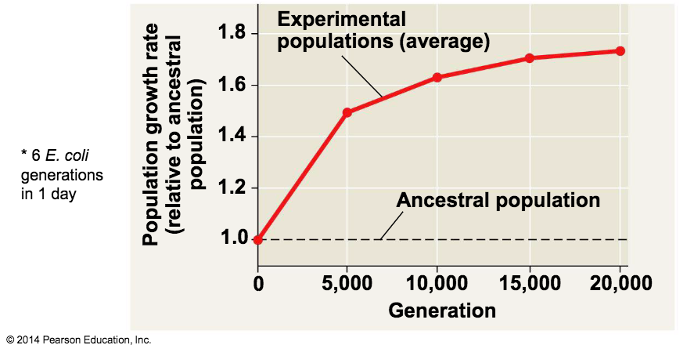
Population growth rate (relative to ancestral population)
In the science news article about bats and white nose fungus, which role does the fungus not play
photoautotroph
purple sulfur bacteria absorb light in the same wavelengths as ulva algae
false
spores were the evolutionary innovation for gymnosperms
false
which of the following is not a factor that delays decomposition in peat bogs?
high carbon concentration
which of the following findings could be learned from the above graph showing the impacts of endophytes and pathogens on cacao plants?
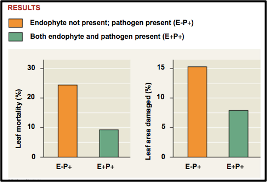
the presence of the endophyte in the presence of the pathogen helps offset leaf mortality for cacao plants
which of these statements is true and best describes why deforestation of the Amazon is problematic for the Earth’s climate?
deforestation prevents trees from moving water from the soil to the atmosphere which makes clouds and allows rain to fall on adjacent forests
an oak worm caterpillar eats a whole oak leaf and then moves onto another lead. After taking a bite of the second leaf, the caterpillar stops eating. The plant is likely using induced defenses. true or false?
true
which of the following statements are true about carbon dioxide?
During lab, carbon dioxide levels decreased in the air moving into the IRGA when the light was on and the plant was in the chamber
carbon dioxide absorbs long wave radiation thus warming the earth
carbon dioxide levels decreased at the end of the carboniferous period after the first forests colonized earth
true or false? Lignin was the major evolutionary innovation for non-vascular plants
false
which of the following nutritional groups use carbon dioxide as their carbon source?
photoautotrophs, chemoautotrophs
induced defenses are always turned on within the plant to defend it from herbivory
false
which of the following groups of plants has the most species that exist on earth today?
angiosperms
match the evolutionary innovation with the group of plants listed that first showed it
Tracheids: ferns
seeds: gymnosperms
xylem and phloem: ferns
flowers: angiosperms
fruits: angiosperms
stomata: mosses
seed plants were important for the dramatically changing human culture because they:
allowed humans to become the dominant producers of food in ecosystems
mycorrhizal fungi provide nutrients for plants. which of the following is not provided by some mycorrhizae fungi for plants?
carbon dioxide
in the carboniferous era, the first forests drew down atmospheric co2 levels which created cold conditions. true or false?
true
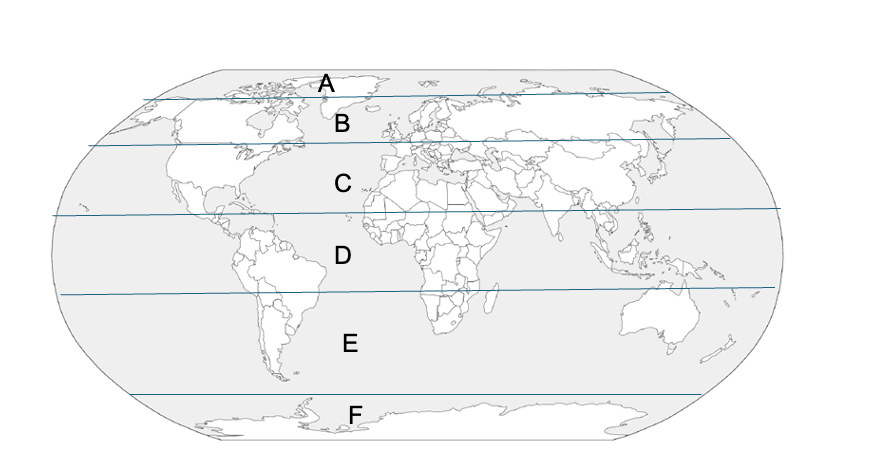
most of the world’s sphagnum moss peat bigs: B
highest animal biodiversity: D
highest soil carbon density: B
the amazon rainforest: D
invasive white nose fungus is killing bat populations: C
highest soil bacterial diversity: C
which of these statements can you deduce from the bacterial evolution graph shown above?
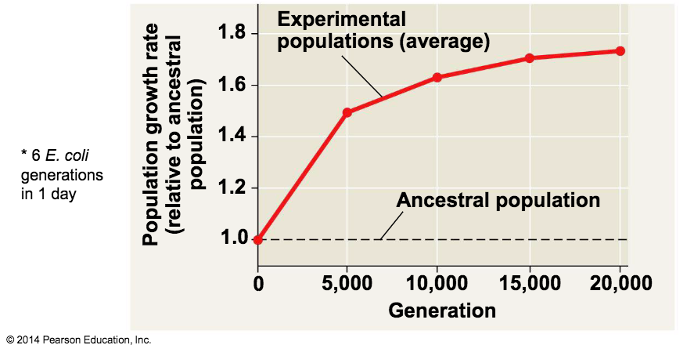
population growth rate of the experimental populations always exceeded that of the ancestral population after the first generation
put the following groups or organisms in the order they evolved from earliest to most recent
bacteria
eukaryotes
mosses
ferns
gymnosperms
angiosperms
which of the following is the group of plants that was the major food source for huge herbivorous dinosaurs?
gymnosperms
which of these does not introduce genetic variation into a population of organisms?
growing E. coli bacteria in low glucose media
which of the following characteristics are true of both bacteria and fungi?
they both can be chemoheterotrophs
which of the following groups of organisms cannot be a chemoheterotroph?
cyanobacteria
a membrane-bound nucleus is present in both archaea and eukarya
false
in which of the following groups is the gametophyte the dominant life form?
mosses
in the carboniferous era, the first forests drew down atmospheric co2 levels which created cold conditions. true or false?
true
which of the following treatments which is not shown in the above graph would indicate that the endophyte was detrimental to the cacao plant leaf mortality and damage?
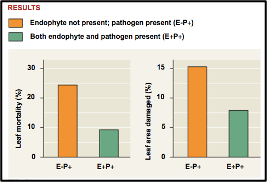
endophyte + pathogen -
in the fungal life cycle the haploid stage is the eukaryotic stage?
false
why is mutualism between plans and mycorrhizae beneficial for both?
The symbiotic relationship between plants and mycorrhizae and plants is beneficial for both because the fungi are able to absorb nitrogen and phosophorous from the soil and give it to the plant, while in turn the plant gives carbon back to the mycorrhizae for nourishment. Both ectomycorrhizae and abscular mycorrhizae have this relationship, they just absorb different forms of the nutrients.
Hypothetically, let’s say a spruce tree lives in an ecosystem where only organic nitrogen is present. The spruce tree has mycorrhizae that help in live in this environment. Which type of mycorrhizae does the spruce tree likely have?
ectomycorrhizae
Which of the following are complex plant compounds which can be difficult for bacteria and fungi to decompose? (May be more than one answer)
phenolics, lignin
Which of the following statements is NOT true about gymnosperms?
these plants were the first to have lignin and vasculature